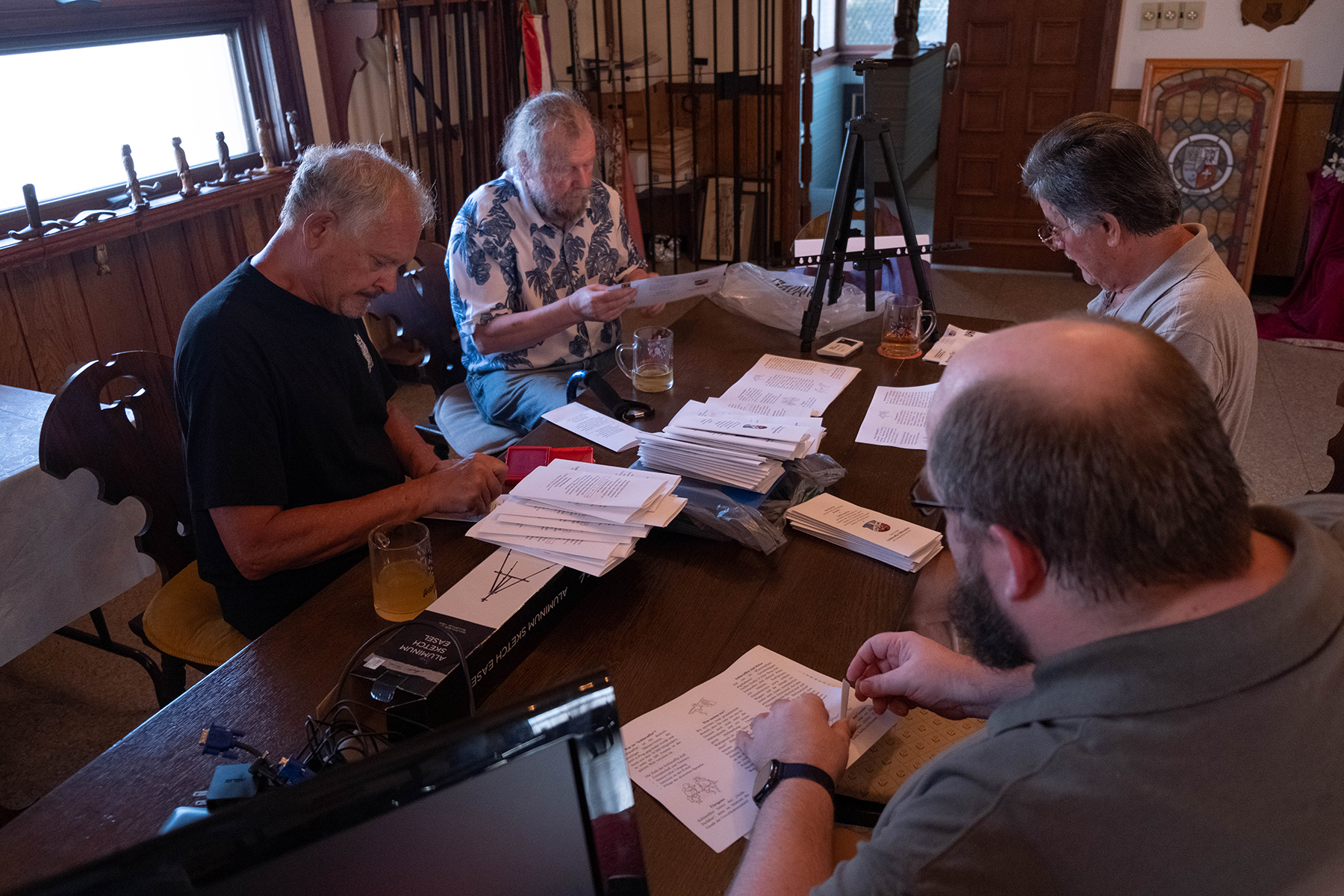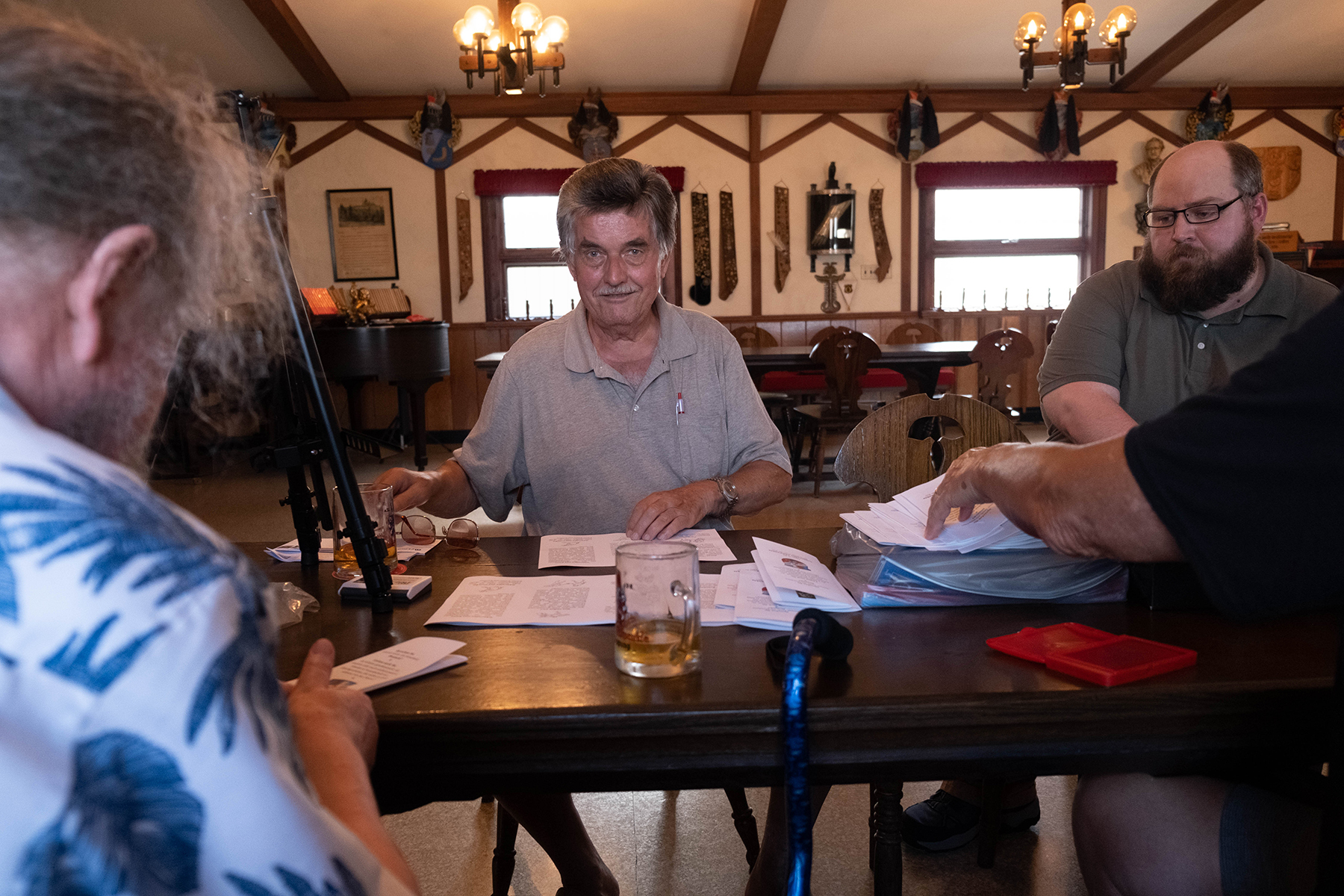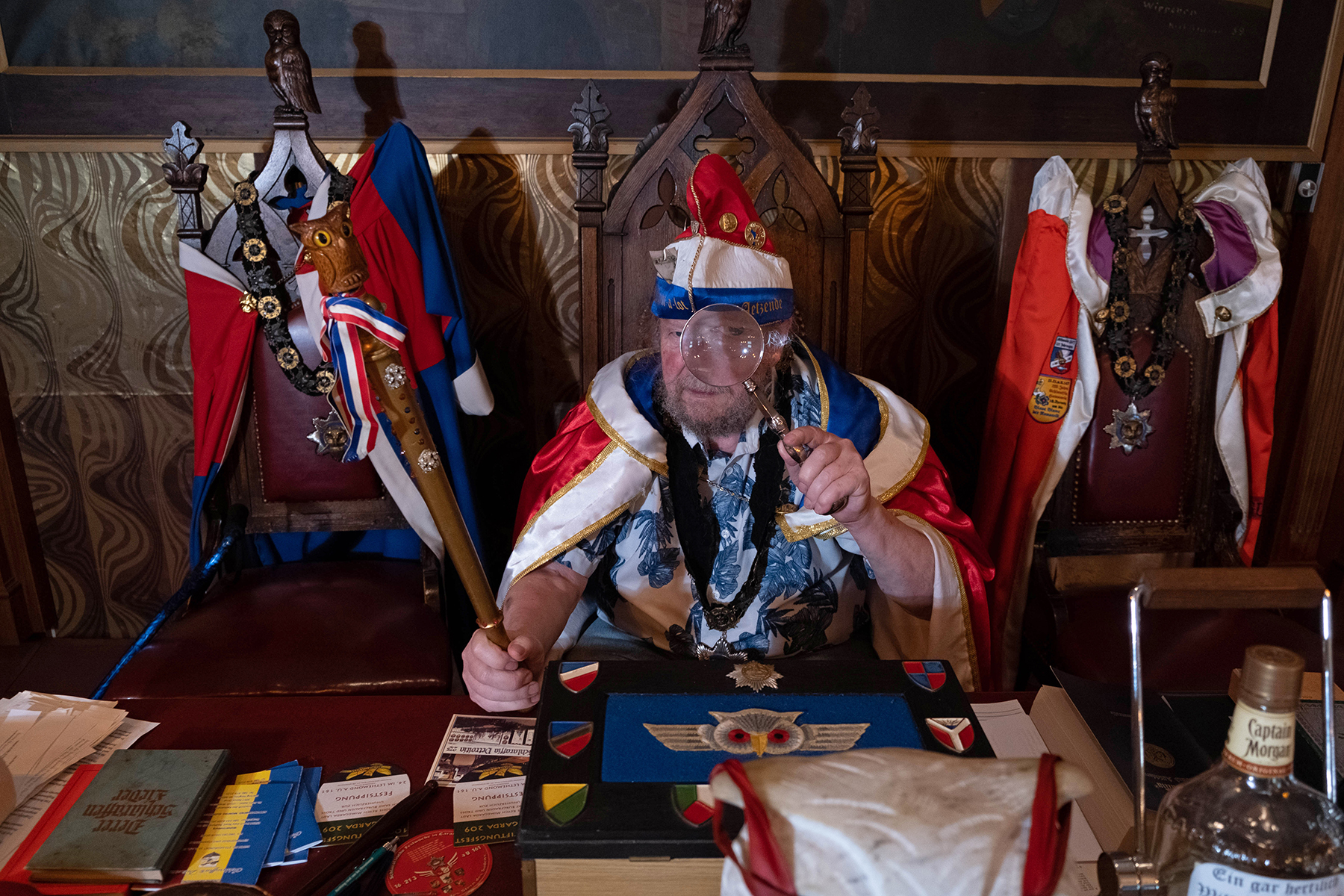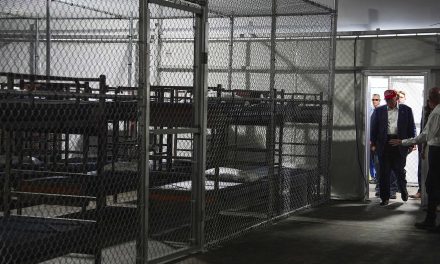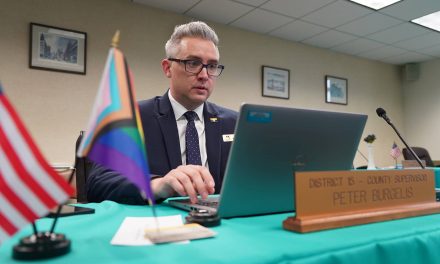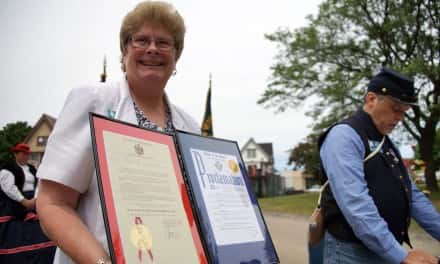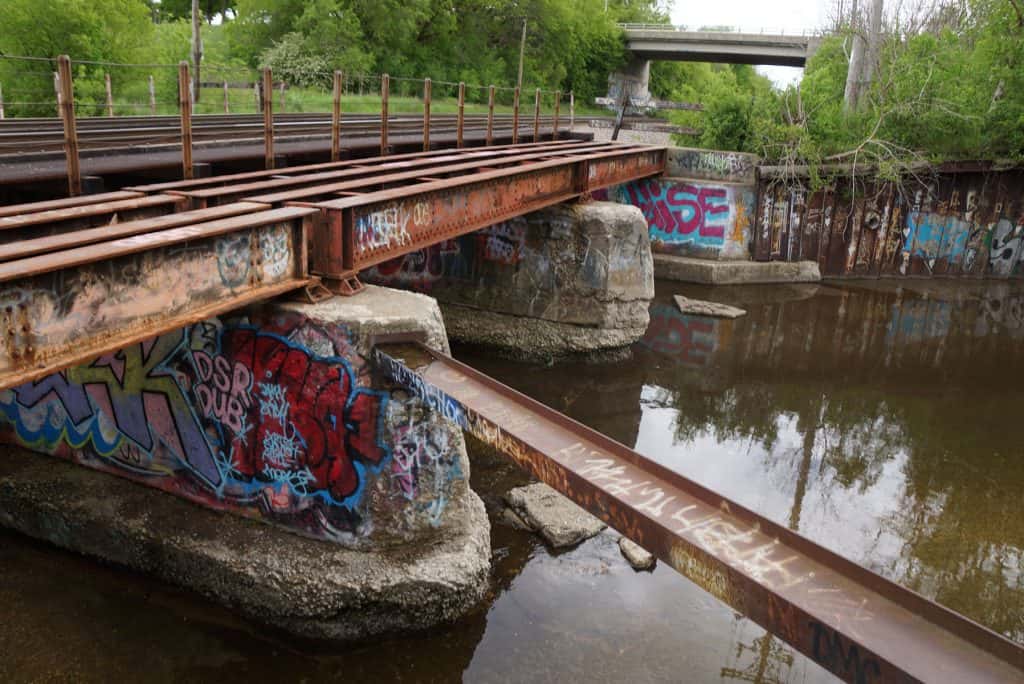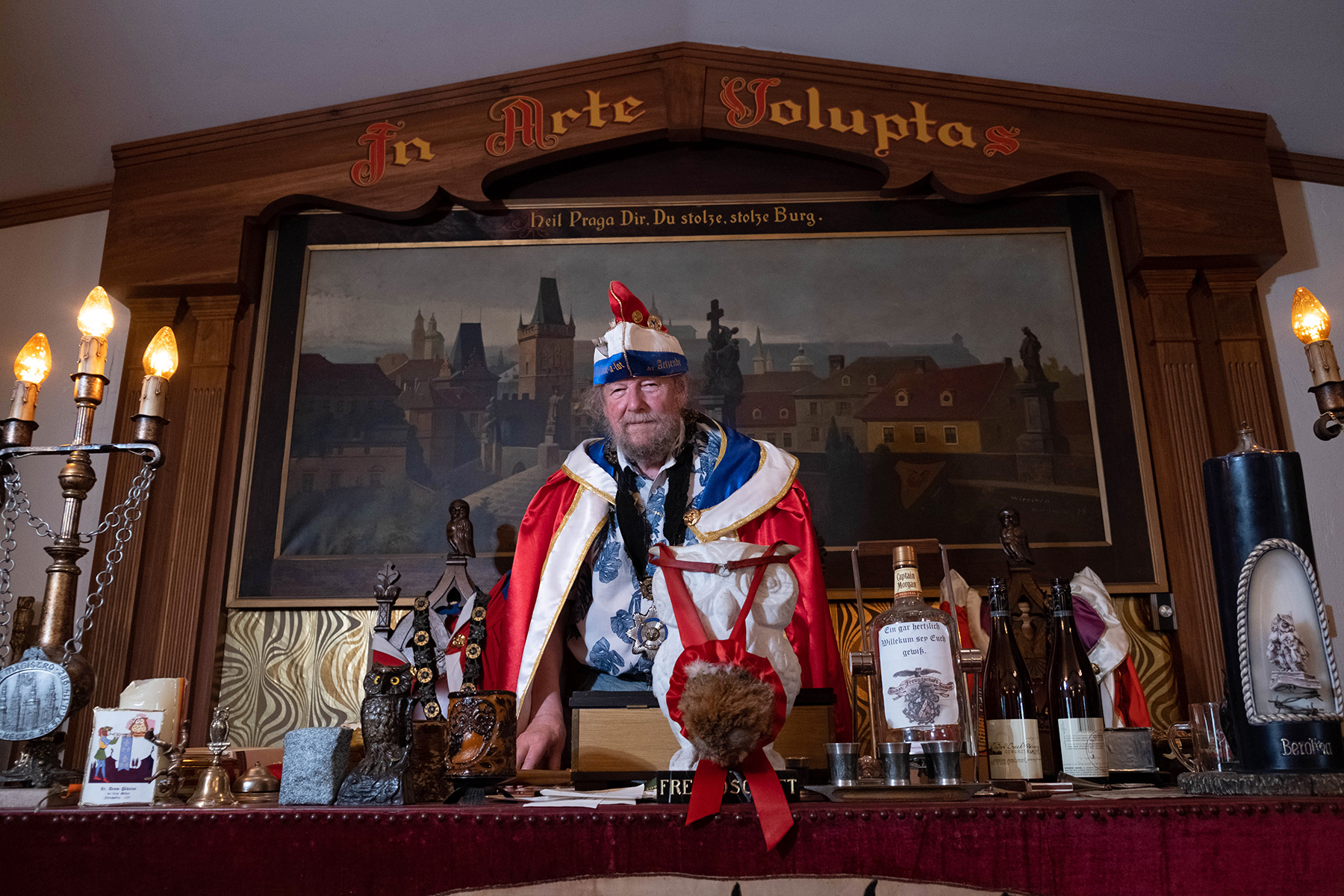
In our increasingly polarized world where identities have become enmeshed with an “Us vs. Them” mentality, does there exist any such place where politics, religious affiliation, and so-called social standing have no role? Where the only prerequisite is sympathizing with the motto “In Arte Voluptas” … pleasure lies in art?
Indeed, such a place exists, and one can play a part in it without leaving Milwaukee, so long as you are a man who speaks German.
Founded by a group consisting predominantly of actors and artists in Prague in 1859, in a mocking response to societal structures of the time, Schlaraffia’s first members created an alternative reality only available within their fantastical quasi-medieval “kingdom.”
It was an environment where the discussion of matters from the outside world were banned and only a practiced appreciation of their three pillars of art, humor, and friendship were required for entry.
Soon after its creation, Schlaraffia expanded beyond Prague to Germany and then across oceans, forming anywhere German-speaking men in search of a “humanistically-inclined” club congregated. Milwaukee, with its large German population in the mid-19th century, was one such place and the Milwaukee chapter of Schlaraffia Milwaukia was founded in 1886.
Upon entering Schlaraffia Milwaukia’s castle, called Dachsburg – or Badger Castle in English, one is said to leave the “profane” world and enter the realm of Schlaraffia. Badger Castle, like other fortresses within the kingdom, is decorated to give the appearance of a medieval gathering hall. It contains painted shields from past and current members, heavy hand-carved wooden tables and chairs for communal sitting, and even wooden swords for their Ritter – or knights.
The ubiquitous Uhu, eagle owl, can be found in many forms throughout the hall, symbolizing wisdom and serving as a representation of Schlaraffia as its farcical deity. Notable within Badger Castle are a series of original artworks by the famed German-American painter Friedrich Wilhelm Heine, one of Milwaukia’s early members.
During their formal meetings in winter, pageantry presides with its members using club-exclusive terminology and donning colorful silken capes and helmets upon which their Schlaraffian knight names are written.
As a painter, the current Milwaukia “lordship,” Michael Kutzer, was dubbed by his fellow Schlaraffians as “Sör Paint-a-lot.” Each Sippung “ceremony” begins with a gong and can include special speeches, poems, singing, skits, and of course the generous drinking of beer from steins.
What today may be seen by some as a LARP – Live Action Role Play, the ceremonies serve as an embodiment of the group’s motto In Arte Voluptas and harkens back to the theatrical history of the group’s founding members.
Outside of the walls of their castle each man may lead a different life, but as soon as they enter through its doors, the men become something else – the knights of Schlaraffia. In this way, the members regularly participate in something that, although foundational to our species as Homo Sapiens, is often neglected today: “artification,” as defined by scholar Ellen Dissanayake.
Since its inception, hundreds of Schlaraffian chapters have formed around the world. Yet, as with other fraternal clubs, its numbers are now shrinking. In the United States, Schlaraffia Milwaukia stands as only one of a few remaining castles continuing to keep the traditions alive.
As the knights watch their three pillars crumble, who will their knights in shining armor be – to continue the tradition into the next generation? Any Milwaukeean who is an aspiring German speaker and interested to become a member is encouraged to contact the group.
The knights are also hosting a booth at German Fest and welcome all visitors. The public will be offered a taste of life at Badger Castle on August 18, during their “open castle” event at 500 Marquette Avenue in South Milwaukee.

